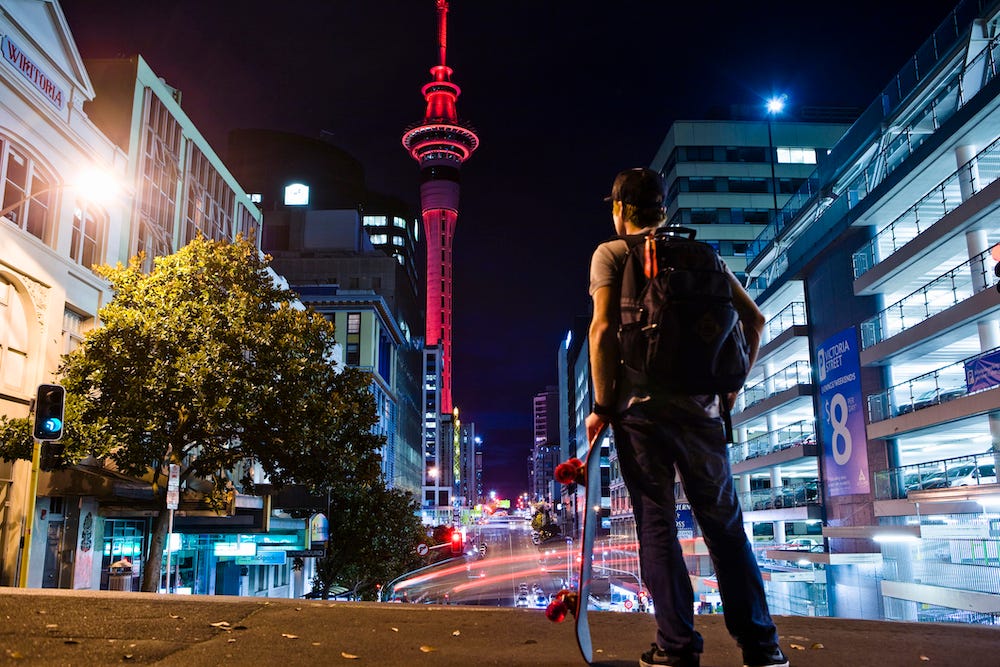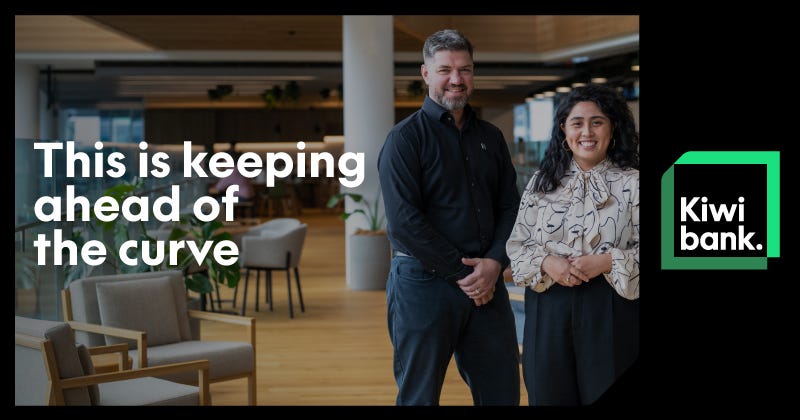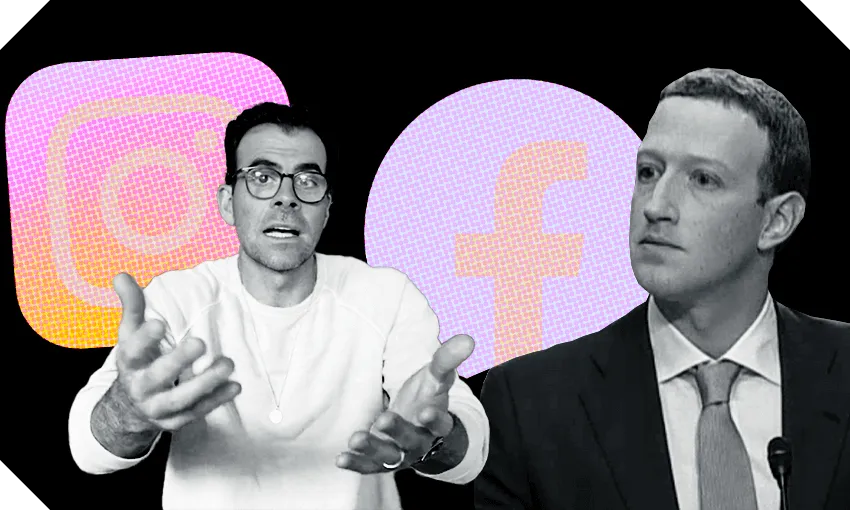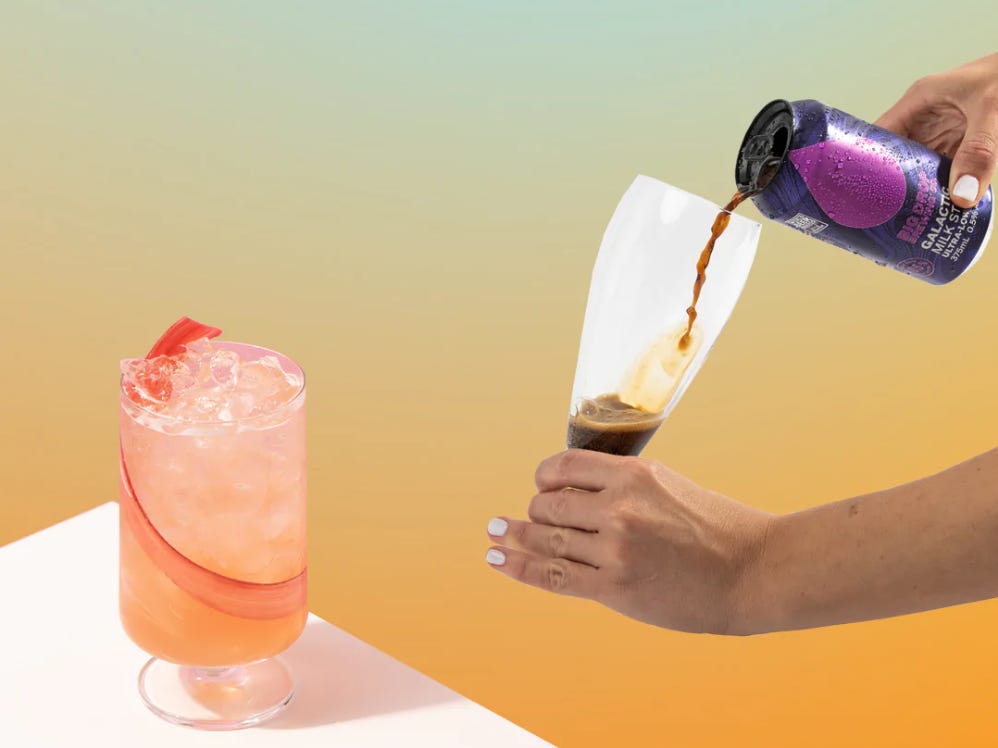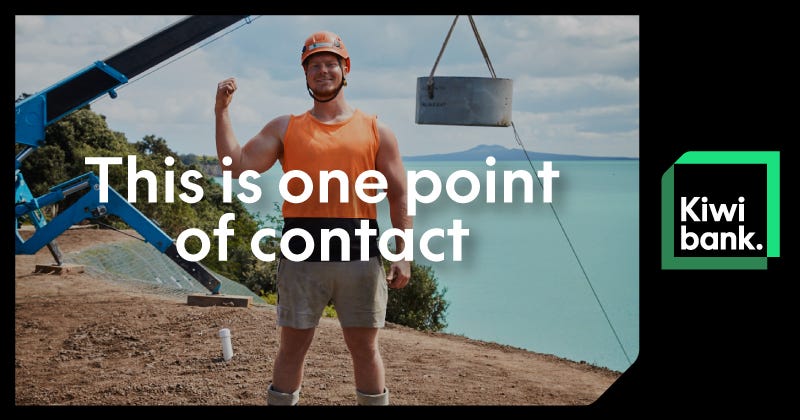The Sky Tower's creator explains himself
Gordon Moller reveals how he created the building that rose to define a city.
Kia ora and welcome to Stocktake, created in partnership with Kiwibank: Hello! I was supposed to be in Wellington this past weekend, prepping a fresh batch of stories at Festival For the Future. Alas, as I was packing my bags on Thursday night, I noticed a tickle in my throat. A quick RAT test proved that I’d finally caught Covid. So, with my whole family in isolation (yes, they’re mad at me!) I’m writing this from bed, which is about as 2022 as you can get. I’ve had a bunch of time to kill, so I’ve been watching the second season of Industry on Neon (go watch, it’s brilliant!) and finally did what I suggested we all do and locked my phone down from location trackers and app sharing. It’s surprisingly easy – this New York Times story provides a handy step-by-step guide – and it takes all of 10 minutes. This week: the Sky Tower turns 25.
-Chris Schulz, business editor
‘People thought it looked like a sewer pipe’
He’d been to Las Vegas to visit the casinos, New York to climb the World Trade Centre, and Toronto to scale the CN Tower. In the early 90s, Auckland-based architect Gordon Moller was on a worldwide research trip taking in the biggest buildings he could find to help inform his own grand designs: a casino, restaurant and hotel complex based in the centre of Auckland, along with a “tower” first mooted for Symonds Street, then moved after a land swap with Auckland Council.
Moller was on the plane back home when a thought came to him. “We were having a glass of wine. Someone said to me, ‘What’s this tower going to look like?’ We hadn’t even designed the thing.” He pulled out his sketch pad and a clutch pencil, then he realised: it should look like the thing he was holding in his hand. “I said, ‘I reckon it’s got to be elegant and beautiful and reach for the sky.’” Based on an airborne sketch made by a tipsy architect clutching a mechanical pencil, the Sky Tower was born.
Twenty-five years on from finishing his masterpiece, Moller is sitting in his Auckland office surrounded by photos of it. His favourite is the one of him smiling and waving proudly from the top of the needle (the exact thing I couldn’t do). After a complicated construction process that had taken years from design to inception, Moller was persuaded to climb to the top by then chief executive of Sky City, Evan Davies. “He said, ‘We're going to the top.’ I said, ‘Yeah!’ So we did.”
Take a glance out of his office window and you’ll see it’s not just photos that nod to Moller’s grandest achievement. From his Karangahape Road suite, he has a full view of his Sky Tower, an instantly identifiable icon that’s come to define Tāmaki Makaurau and all the city has to offer. It first opened its doors to visitors on August 3, 1997 – almost 25 years ago to the day. That makes it the perfect time to ask Moller how it all went down – or up, as it is in this case.
(This interview has been edited and condensed for clarity.)
The Spinoff: How did you end up designing the Sky Tower? Had you designed anything like it before?
Gordon Moller: No. Sky City had decided to build the project on Symonds Street. They wanted to put a big shopping centre up there. They'd gotten this Canadian firm of architects to design it, but it was within a view shaft (particular views of Auckland that can’t be built over). Brierley Investments said, “You need to help us. We're going to appeal. We've been turned down.” I said, “You're never going to get the tower there. You can't go through view shafts. They're sacrosanct.” They went to appeal. The town planning court said, “No, we're not going to support it, but we think you've got a really interesting project that Auckland would really benefit from.” At the same time, the casino was mooted. The government had about six different applicants. Sky City decided to bid for it. They switched their scheme from a shopping centre to a casino. The council said, ‘We've got this corner site on Federal Street and Hobson. Why don't we do a land swap?’ That’s what happened.
Is that when you sketched up the first designs for the Sky Tower?
I was given a weekend to tell them whether they could fit their scheme on that site. I had to do a very rapid concept. That's what architects do – you get asked things like that. They said they wanted a tower. The tower wasn't part of the casino application. It was separate. I proved to them that it was possible to put what they wanted – hotel, restaurant, casino, tower – on that site. I showed them they could. It was the beginning of 93. We designed the casino and the tower at that time.
What were your ideas? What was inspiring you? What look were you going for?
I was familiar with towers around the world. I ... thought a lot of them were pretty ugly. My thought was, if you're going to create a tower, it's a pole or pou … I felt it had to be beautiful.
Was there fear or worry around it? Did you wonder if this would ever happen?
You worry about everything you design, because everything you design takes its place in the public realm. Even a house, people look at it.
This is much bigger than a house though.
Yeah sure. I was quite confident in it. We'd done quite significant projects in Wellington, the Civic Centre ... a lot of commercial work. We were confident in our ability to put buildings together. But no, we hadn't done a tower.
You're not sitting there thinking, “Holy shit, if this fails everyone’s going to see it?”
I knew it was a major. You have to have confidence. Like anybody, you're always challenging yourself as to whether you're trying hard enough. Is this OK? Sometimes you'll realise it's not as good as it should be, so you try harder.
You can't look at a photo of Auckland now without seeing the Sky Tower. It's an instantly recognisable landmark. How does it feel to have affected a city's skyline so dramatically?
I'm really thrilled with it. I'm really proud of it. We got a lot of shit when it was being built.
Why?
Where we got the shit was, people didn’t like the idea of the tower. People hated it. People thought it looked like a sewer pipe. [They said] it was intruding on the landscape. My view was, you had a tower you could go up and understand Auckland’s volcanic cones. Also it's a good beacon. It gives you a lot of orientation.
Did you get asked to design any more giant towers?
We did one in Macau. It's higher than that one. We designed another one in China too, but that never went ahead.
The Sky Tower’s life span is said to be 100 years. What happens then?
Most buildings can be refurbished. There's a tendency to demolish old buildings, which I think is crazy ... it's an incredibly strong shaft.
What role does the Sky Tower play in your life now?
Not much. We're still doing the odd thing for Sky City. I'm still working. I still get up at 5am and start drawing. It's a love for it and I've got a strong work ethic which I got from my parents. Architecture does take a huge amount of time. What you're doing is you're dreaming up what you believe is the right thing for the client, the community, the environment. You have a social responsibility to build something as best you can.
Staying ahead of the curve with Kiwibank Business Banking: Kiwibank’s team of economists can help you make smarter decisions for your business. With their expert insights and forecasts your business is in safe hands with Kiwibank. To get tailored business advice you can trust, try Kiwibank’s Business Banking. Find out more here.
The story I’m watching closely: Social media changes
You may have noticed things look a little different over at Facebook and Instagram. Lately, the social media giants have been executing their own pivot to video. Why? It’s all about the absolute behemoth that is TikTok. “Mark Zuckerberg and his execs are bricking it about this juggernaut, so they’re doing what they do best and attempting to mimic what they see as its core functionality – short form algorithmic video discovery,” explains Anna Rawhiti-Connell, The Spinoff’s newsletter editor. She chats to Duncan Greive about what’s happening and why, what the reaction’s been, and then the pair look at where this could lead, none of which seems good. This story’s going to become one of tech’s biggest across the rest of 2022, so catch up here.
The headlines you need to know about…
“I’m not a bad tempered person who gets into scrapes with everyone, but I don’t mind a scrap.” That’s Willie Jackson, talking on the latest episode of The Fold about his pivot from broadcaster to broadcasting minister. He is going to, at the very least, be outspoken. “You can’t have it crush setups like Pacific media or Māori media,” he says, about the upcoming TVNZ/RNZ merger. It’s a fascinating interview that you can read in full here, or listen to here.
You always think an online scam won’t happen to you. But, if there’s one common thread in Ben Fahy’s fascinating long read about the glut of digital scams out there right now, it’s that none of the victims he talks to did either. But they lost tens of thousands of dollars. And they’re not the only ones – here’s a Nelson firefighter who tells the Herald she lost money too.
Wondering how to hack these crazy cheese prices? Wonder no more. The Spinoff’s resident cheese expert Ben Gracewood has been keeping an eye on things with his Cheese Price Index for a couple of months now, and he’s got a handy little tip to help you get your 1kg block of tasty for well under $20.
Are you feeling down right now? A touch angry? Maybe depressed? Even sore? A University of Auckland economics professor has crunched the numbers and come to the conclusion that inflation could be to blame. I spoke to Robert MacCulloch about why he’s suddenly getting calls from overseas journalists.
I found a New York Times story about why several thousand residents of Rotterdam were ready to pelt Jeff Bezos’ new yacht with eggs absolutely fascinating. It’s a story of clashing cultures: one that thinks taking apart a city monument for a quick sail on a billion dollar boat is fine, and another that believes displays of wealth deserve a nice pummelling of runny yolks.
Imagine living in a society where details about everyone’s earnings and taxes are publicly available. With a gender pay gap of just 4%, Norway has operated under this system of pay transparency since the 1800s and some argue it’s time for a similar approach in Aotearoa. Bernard Hickey asks AUT Professor Gail Pacheco, who heads the NZ Work Research Institute, about whether pay transparency is the answer to help address our pay equity gaps for women, Māori and Pasifika. Listen here.
Finally, here’s something we’ve been toying with…
Last week, I wrote about the frenetic rise of the 0% alcohol trend, a fast-growing movement that consumers and businesses are jumping on in droves. (Our office recently taste-tested 16 non-alcoholic spirits). It is, right now, a land of opportunity, something Donna and Ricky from Clear Head Drinks have spotted. “Alcohol was becoming far more important to me than it should have … I didn’t have an off switch,” Ricky told me recently. “I couldn’t stop.” Along with his wife, the pair quit drinking and now run Clear Head Drinks, a website stocking what must surely be the best range of 0% drinks in the country. They stock local faves Tiny, Bach Brewing and Bare Beer, as well as a solid range of overseas drinks. I’m a fan of the UNLTD IPA and Drop Bear’s tropical hazy, and they also have stout – including a 0% Guinness. (clearheaddrinks.co.nz) /Chris Schulz






